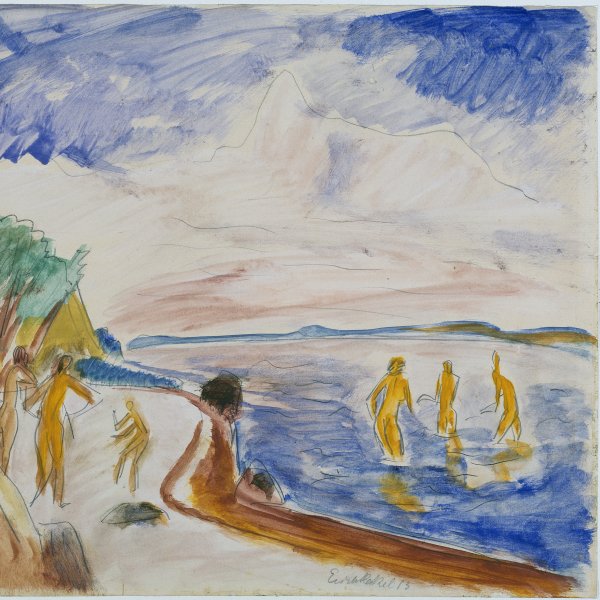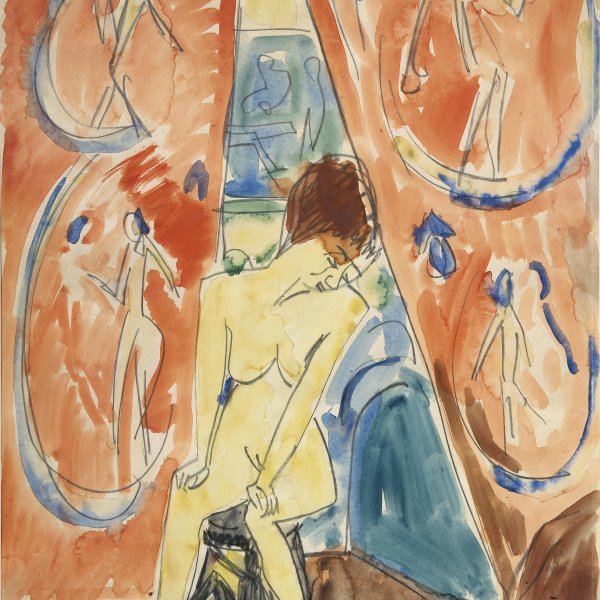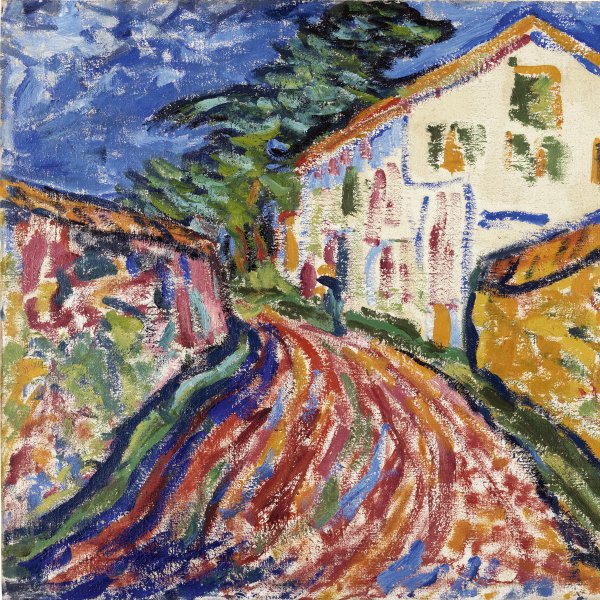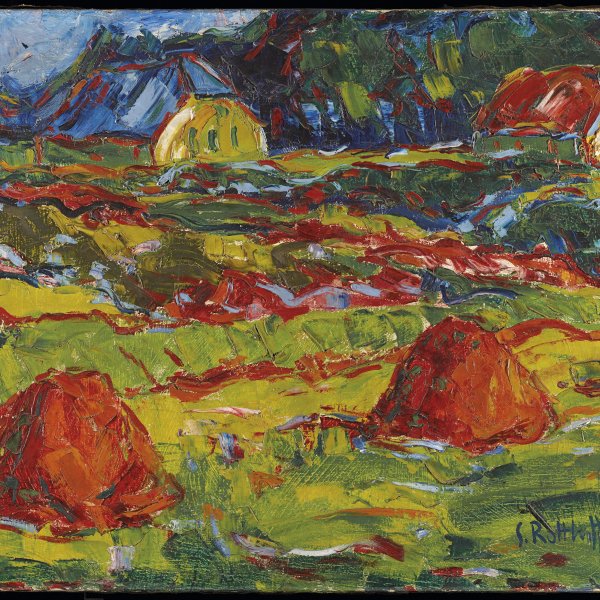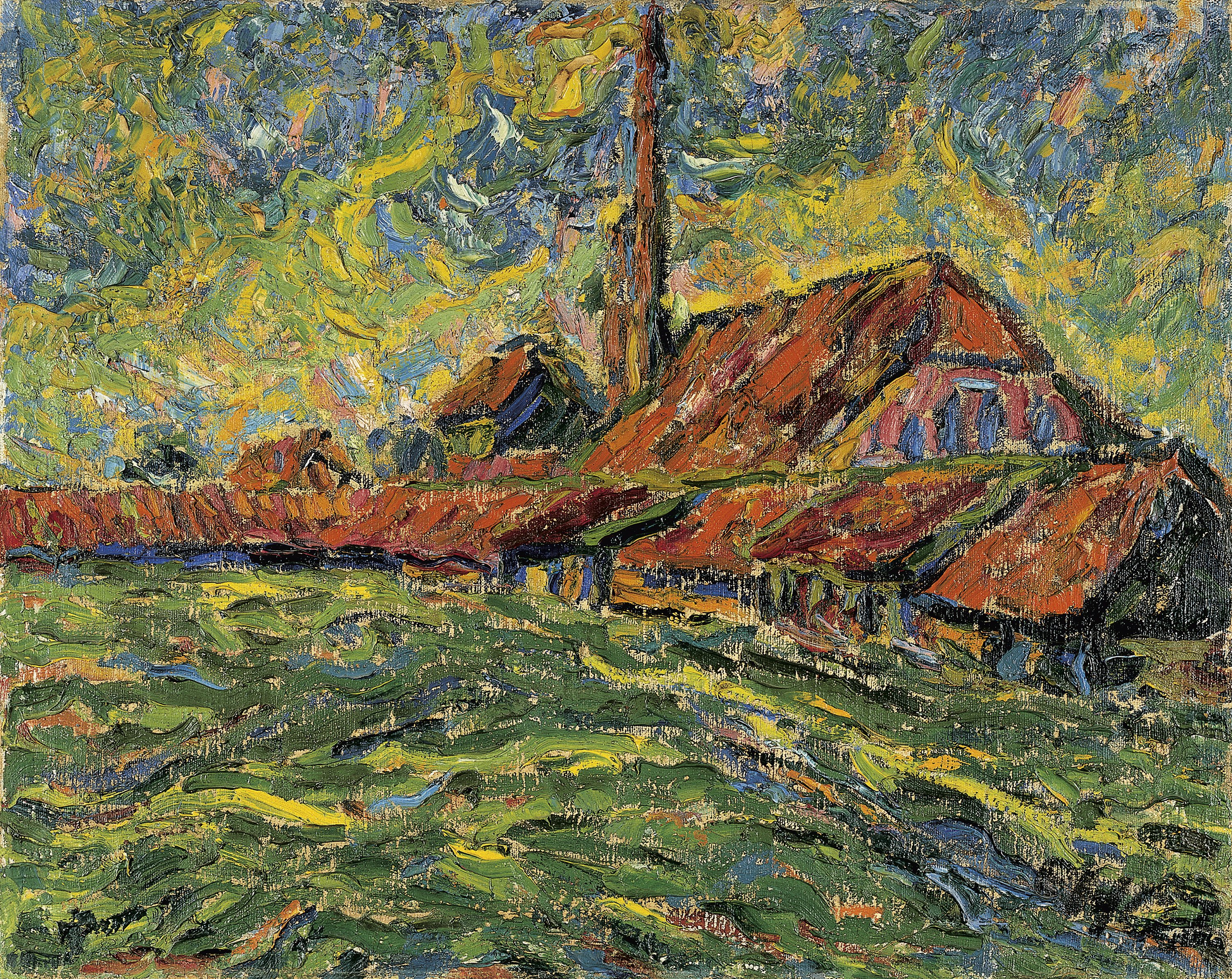Brickworks
The earliest German Expressionist group, called Die Brücke [The Bridge] was founded by a number of young artists whose principal aim was that of creating a bridge between life and art. Their permanent quest for a primeval harmony resulted in their summer trips in which they left Dresden for distant locations. Erich Heckel and his fellow group member Karl Schmidt-Rottluff focused on the small coastal town of Dangast on the North Sea.
Located in that region, the brick factories had tall chimneys and were a bright red colour that contrasted strongly with the surrounding green landscape. They were depicted for the first time by Heckel in this canvas in the Museo Thyssen-Bornemisza and would soon become one of his preferred subjects. The loose handling, with its spontaneous brushstrokes heavily charged with unrealistic colours, recalls Van Gogh, whose work Heckel encountered in an exhibition held in Dresden in 1905, but differs in the less ordered and systematic application of the strokes.
MRA
Erich Heckel painted Brickworks during his first trip to Dangast with Karl Schmidt-Rottluff in summer 1907. Like most of the members of the Die Brücke group, these two young painters departed from their Dresden studio in search of new subjects to paint, driven by their yearning for a more primitive lifestyle that was more in harmony with nature. The small German coastal town of Dangast in the province of Oldenburg, which they chose at random from an atlas, became their North Sea Arcadia. In this particular nearby paradise, the two artists gave free rein to their creative instincts and enjoyed a prolific spell, fascinated by the variety of the scenery, the rustic nature of the architecture and the changing atmosphere. The numerous brickworks on the outskirts of the town, the leading industry in the area, with their tall chimneys and vast red roofs that stood out among the green landscape soon became a pictorial motif for both. Years later, Heckel recalled in an interview these striking brickworks that made such an impression on him. The buildings “introduced a note of red into the landscape; the long sheds emphasised the horizontal, while the tall chimneys, as it were, brought the sky into the picture.”
The painting in the Museo Thyssen-Bornemisza, dated 1907, is the first Heckel painted on this theme. It represents the Branloge factory, which was established by Adolf de Cousser in 1875 and is still running today. Heckel later repeated this motif in a few watercolours and works on paper; and the following year he captured the same factory on canvas from a different angle. Peter Vergo draws attention to the contrast in the technique of both paintings — that of the Thyssen-Bornemisza much more expressive and pigment-laden than the second, which marks “the beginnings of a transition towards the greater clarity of his mature style.”
In this first version, Heckel dispenses completely with contours and builds up form chiefly through colour. The structure of the painting is dominated by the powerful transverse line of the factory buildings, which is disturbed only by the verticality of the towering red chimney. The vivid, unnatural colours, thick impasto and small brushstrokes applied with great spontaneity and a certain amount of movement accentuate the expressiveness of the composition. The mark left on him by the Van Goghs he saw at Dresden is evident, although Heckel reinterprets the Dutch artist’s orderly brushstrokes applied with systematic determination and employs a much more disorderly and erratic technique. Indeed, the young Die Brücke Expressionists regarded Van Gogh as a painter of French spirit concerned with achieving a certain effect of order and balance on the picture surface and therefore rejected the structural aspects of his work, adopting only the expressive elements of his language.
Paloma Alarcó





